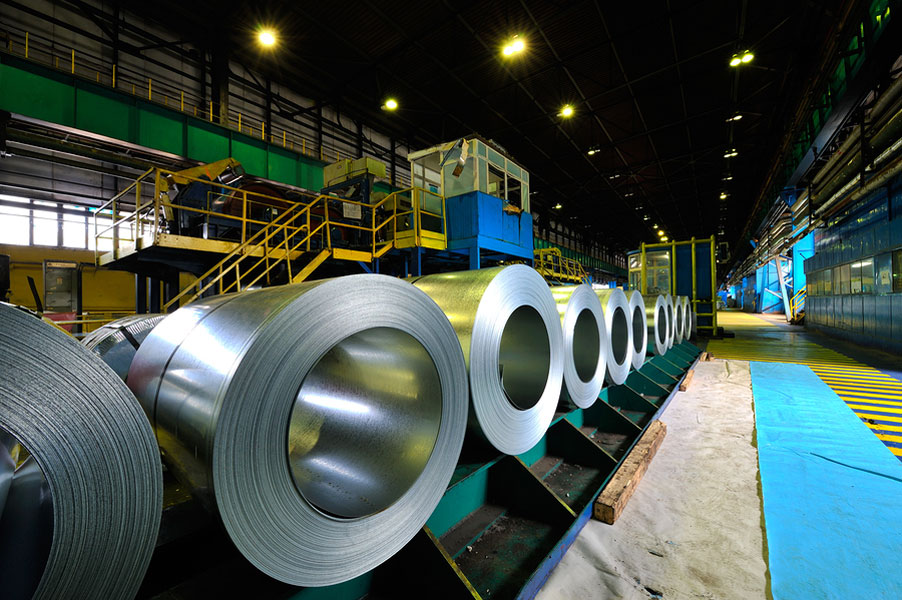Metals and alloys each have their own unique set of advantages and limitations which make them either ideally suitable or unsuitable for various applications. In metal stamping projects, it’s especially important to choose the appropriate metal, so that best results can be achieved. Given the fact that various metals can be combined with other metals to create alloys which have the precise set of characteristics needed for a given application, it should theoretically be possible to always work with the most advantageous alloy. In this discussion, the most common metals used in the metal stamping industry will be reviewed, in terms of their strengths and weaknesses.
Non-Ferrous Metals
Non-ferrous metals are a complete category unto themselves. They are comprised of metals and alloys which contain no iron, for instance brass, copper, aluminum, titanium, tin, zinc, and lead. Unlike metals which do contain iron, non-ferrous metals never rust when they are exposed to various weather conditions. This in itself is an extremely desirable property, but non-ferrous metals also have other strengths such as resistance to corrosion, electrical conductivity, non-magnetic properties, and they generally weigh less then ferrous metals.
Non-ferrous metals have a very broad application which creates a tremendous demand for them in such areas as automobile parts, jewelry, electrical wiring and circuitry, and components used in the aerospace industry. The price of non-ferrous metals will always depend on exactly which type of metal is being used, but generally speaking, they will cost more than metals which contain iron. In some cases, the lightweight characteristic of non-ferrous metals can be a big advantage, but it is also seen in other situations as a drawback, where strength or extra weight is deemed desirable for metal stamping projects.
Stainless Steel
Stainless steel is an alloy which contains more than 10.5% chromium by mass, and which is renowned for its superb resistance to corrosion. The greater the chromium content in stainless steel, the greater its corrosion resistance, which is a highly prized characteristic in many applications, including metal stamping. To further enhance its corrosion resistance, stainless steel is often combined with other elements such as nickel or molybdenum.
Because of its superior resistance to corrosion and its tremendous strength, stainless steel is used in a number of industries, including aerospace, automotive, food and beverage, and medical. It is also possible to roll stainless steel into sheets or wires, so that it can be used in surgical equipment, kitchen appliances, cookware, sanitary piping fixtures, and even cutlery. If there can be said to be a disadvantage to using stainless steel, that would be its higher cost, at least as compared to carbon steel. The higher cost of stainless steel is almost always attributable to elements which it has been combined with.
Carbon Steel
Probably the single most commonly used type of steel today is carbon steel, and it derives its name from having at least a 2.1% carbon composition. It will generally also contain traces of several other types of elements such as titanium, chromium, nickel, and cobalt. One of the great strengths of carbon steel, especially low to medium carbon steel (the type which contains approximately .05% to .6% carbon) is its tremendous ductility and malleability. Carbon steel is very easy to twist, cut, or bend, so that it can be formed into a huge variety of shapes. As you might expect, that makes it ideal for a great number of applications such as axles, gears, structural beams, auto-parts, and pipelines.
There is also a type of carbon steel called high carbon steel, which is composed of between .61% to 1.5% carbon, and is much stronger than low to medium carbon steel. This type of carbon steel is most commonly used for wood cutting tools such as knives, drills, saws, and axes, because of its superior strength and hardness, but it is also often used in metal stamping.
When choosing a particular grade of carbon steel, it will be necessary to consider the relatively low tensile strength of low carbon steel (which would make it unsuitable for applications where high stress is indicated), versus the much higher strength of high carbon steel, which lacks malleability, and is difficult to weld.
Velocity Metalworks has become recognized as a valued partner in the metal stamping industry for our strong Tool Design and Build competency. This, combined with our metal stamping capacity, precision machining services, and EDM capability make us a full service provider that can deliver value in your tooling and stamping needs. Contact us today to see how we can help you work even better.

